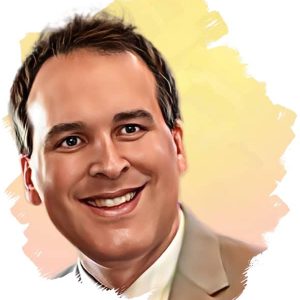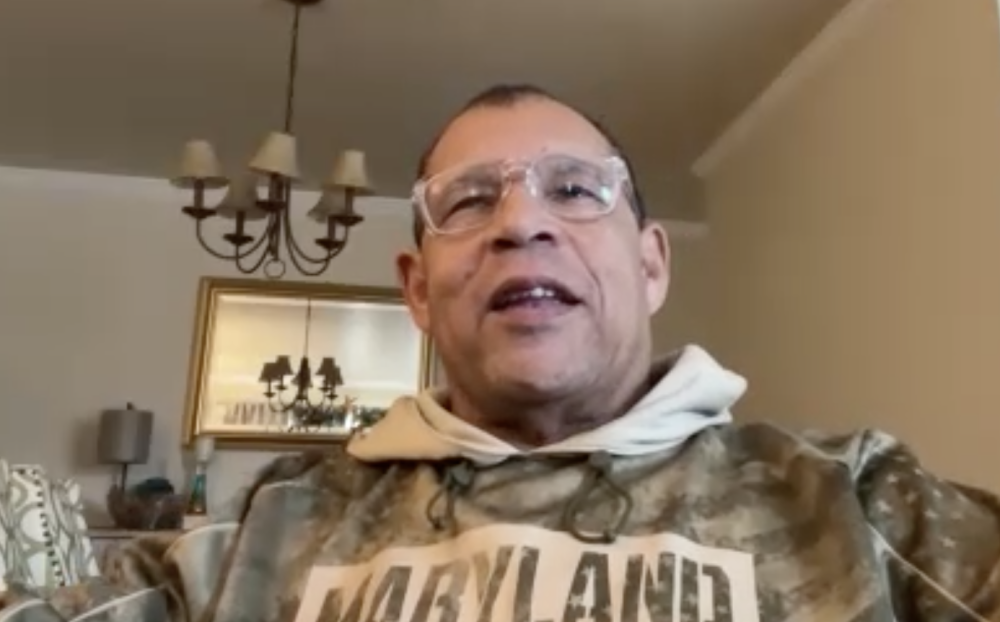As the Orioles fall toward the 100-loss mark with seemingly little resistance over the final week of the season, their elder statesman winds down his 10-year stay with an organization fixed in what feels like an endless era of losing.
Melvin Mora arrived in the Charm City after being traded with three others from the New York Mets for shortstop Mike Bordick in Syd Thrift’s infamous fire sale of 2000. The 28-year old utility player was coming to a struggling team with a future Hall of Famer (Cal Ripken) winding down his career and its best hitter (Albert Belle) only months away from retirement due to a degenerative hip condition. The Orioles were completing their third-straight losing season in 2000. Change was needed.
Mora’s addition, along with the 13 others acquired in the five summer deals, would pump youthful energy into an aging organization and eventually bring the Orioles back to where they belonged at the top of the standings, right?
If only.
Of course, we all know the story. Despite the quantity of players coming to the organization for veterans such as Bordick, Charles Johnson, B.J. Surhoff, and Harold Baines, Mora would be the only acquisition to contribute beyond the next couple seasons. Most would never contribute at all.
Mora debuted with the team as a role player on an 88-loss club and will take his final bow this weekend on a club trying to avoid becoming the third team to lose 100 games in the 56-year history of the franchise (1954 and 1988 were the others). In his 10 years, the Orioles averaged 92 losses a year, finished in fourth place seven times, and landed in the basement twice—one of those this year.
He played for four different managers, five different general managers (or whatever the organization was calling the job at the time), and saw the beautiful Oriole Park at Camden Yards transform from one of the chic places to be (3.1 million fans in 2000) on a summer night to a mostly desolate palace (less than 2 million fans in 2009) infiltrated by Boston and New York fans 18 times a year.
During Mora’s 10-year stay in the Charm City, the Orioles finished in third only once (2004), but the high-water mark came in the early stages of 2005.
The Orioles enjoyed a two-month reign at the top of the American League East, and the long rebuilding process appeared to be on the right track. However, Mora saw his team collapse in the second half with a disgraced teammate’s steroid suspension (Rafael Palmeiro), injuries, and management’s failure to improve the team down the stretch (trading Larry Bigbie for Eric Byrnes is going to get you over the hump?).
Needless to say, Mora has had little to smile about in his 10 years with the Orioles. You almost have to feel sorry for the guy.
As he is resigned to the reality of this almost certainly being his last season in Baltimore (the club will not use a $8 million club option for 2010), people will overstate the importance of his disappointing 2009 season—at age 37, mind you—and his mid-summer spat with Dave Trembley when judging his 10 years as an Oriole.
His disappointing final season cannot—and should not—shortchange his accomplishments playing in an absolutely miserable era of Orioles baseball.
The super-utility player that came to Baltimore flashing the leather at a variety of positions—left field, center field, and shortstop to name a few—steadily improved his game and eventually became an All Star, albeit for a bad club needing a representative in 2003. Mora would earn a second trip to the Midsummer Classic in 2005.
Ironically, Mora was excluded from the All-Star squad in 2004 despite being the best third baseman in baseball that season. Yes, before you ask, better than that guy wearing pinstripes in the Bronx.
It was the best season of his career and one of the finest seasons ever by an Oriole. His .340 average was, and still is, the best single-season clip in club history. Mora also led the American League with a .419 on-base percentage and finished in the AL’s top 10 in batting average (behind only Ichiro Suzuki), slugging percentage, runs, hits, total bases, and doubles. His play earned him the Silver Slugger award (awarded to the best offensive player at each position) and solidified his status as an everyday player.
While Mora would never approach his tremendous 2004 numbers again, he would continue to provide solid numbers and steady defense in his remaining years in Baltimore, even throwing in an amazing second half of the 2008 season for good measure.
Regardless of the sour aftertaste created by his 2009 campaign, Mora is unquestionably an Orioles Hall of Famer, ranking in the franchise’s career top 10 in home runs, hits, doubles, runs batted in, and runs. And with apologies to Doug DeCinces’ fans, Mora may rank as the second-best third baseman in club history (The 1979 hero’s best years came with the California Angels).
Perhaps more important than his diamond achievements when pondering his legacy in Baltimore is the fact that Mora truly embraced the Charm City and adopted it as his home. Mora and his wife Gisel had their famed quintuplets in Baltimore—and chose to raise their six children right here.
While nearly every Oriole of the past decade waved goodbye to the city at the end of September and didn’t return until the new baseball season in April, Mora and his family stayed in Fallston—and plan to continue doing so.
Others wanted little to do with the community or even went as far as to demean the city (Aubrey Huff), but Mora thought highly enough of it to make it his home.
Make no mistake, the organization treated Mora very well financially (probably too well), but he understood the importance of sharing that good fortune with the local community through various charitable endeavors.
Simply put, Mora got “it.”
It’s an idea not to be taken for granted in this modern age of so many high-paid mercenaries completely void of any pride, philanthropy, or connection for the city in which they play.
Mora’s role in the community was never more apparent than in late-December 2005. Longtime bullpen coach and leading community ambassador Elrod Hendricks had passed away just a few days shy of Christmas, yet Mora was the only active Oriole to attend the coach’s funeral on December 29.
It was more an indictment on the sorry state of the organization than a tremendous gesture, but at least Mora WAS there. It was something the 24 others could not say, regardless of the pathetic excuses claiming it was too close to the holidays.
As an Orioles fan, I chastised the missing players but also appreciated Mora being there to represent the current team, pathetic as it was. Mora understood not only what Hendricks meant to the organization but to the entire city.
One might say it doesn’t take much effort to embrace the local community, so why such praise for Mora? He was being paid millions, right?
Well, easy as it might be, he was one of the few to care enough to actually do it.
Even in his final weeks with the Orioles, Mora demonstrated one more example of understanding what it means to be a Baltimorean. When learning the organization planned to honor him for playing the second-most games at third base in franchise history, Mora requested the man ahead of him on the list, Hall of Famer Brooks Robinson, to be present.
So, despite little publicity or fanfare (a different issue entirely), Mr. Oriole was there to celebrate the accomplishment with the Orioles’ current third baseman. Who knows if Mora can tell you how many Gold Gloves Robinson won at the hot corner or what year he even retired, but he knew enough to understand Brooks needed to be there. That’s saying something.
Unlike Brooksie, who played a large portion of his career in the Orioles’ glory days, Mora is likely to be remembered as the figurehead—along with another good player and nice guy, Brian Roberts—for the franchise’s miserable era of losing baseball that is yet to end here at the conclusion of the 2009 season.
“Mora had to stink, or the Orioles would have won while he was here, right?”
But let’s admit, save for the infancy of his career and a two-year window of fantasy baseball in 1996 and 1997, Ripken didn’t exactly play in the Orioles’ glory years either.
The truth is though Mora certainly wasn’t the type of player that could carry a winning team by himself, he also wasn’t the reason the team stunk for the decade he was with the organization. In his best years, Mora undoubtedly would have been a valuable member of a contending club.
No one will suggest that Mora belongs in the same stratosphere as the Orioles’ royalty of the Robinsons, Ripken, Palmer, and Murray. Not even close.
And even the casual fan would never confuse his baserunning prowess with the legendary Rickey Henderson, or even Willie “Mays” Hayes for that matter.
Mora may not have always said the right thing, but he was occasionally willing to speak up in a way so many frustrated fans could admire. His declaration that some Orioles didn’t know what it took to win in 2007 and his famed “Who is going to pitch for us?” query in 2005 may have ruffled some feathers in the Warehouse, but it was music to the ears of fans wanting a terrible organization to take accountability.
Ultimately, Mora should be remembered as a good player and one of the few to perform admirably through a miserable period of Orioles baseball.
He represented the city with pride and is one of the few I felt proud to cheer over the last decade.
So long, Melvin, but we’ll see you around town.
It’s a shame we didn’t have much fun at the ballpark.


























